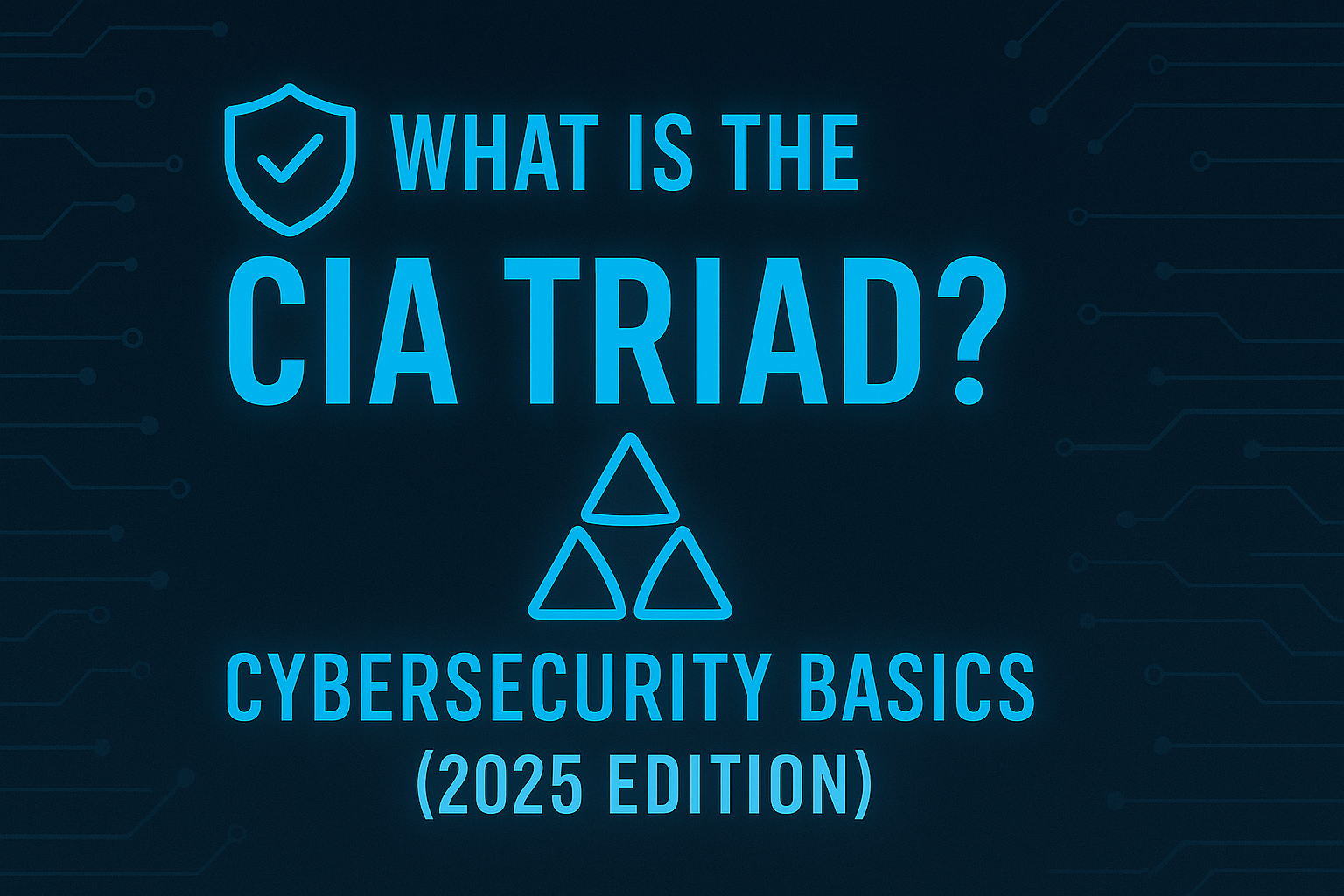Learn what the CIA Triad is and why it’s the foundation of cybersecurity. Explore confidentiality, integrity, and availability in this 2025 beginner’s guide.

Introduction: What is the CIA Triad in Cybersecurity?
In the world of cybersecurity, few concepts are as foundational—and critical—as the CIA Triad.
No, it’s not about spies or secret agents. In cybersecurity, CIA stands for:
- Confidentiality
- Integrity
- Availability
These three principles form the backbone of all information security strategies, guiding how we protect systems, networks, and data from unauthorized access and damage. Whether you’re a beginner stepping into cybersecurity or a professional aiming to secure global enterprises, understanding the CIA Triad is non-negotiable.
📌 Quick Note: This blog is part of our Cybersecurity Fundamentals series—designed to take you from zero to expert!
1. Confidentiality – Keeping Secrets, Secret
At its core, confidentiality ensures that sensitive data is only accessible to those who are authorized to see it.
Real-World Example:
When you log in to your email, only you should be able to view your inbox. If a hacker breaks in and reads your private emails, confidentiality has been compromised.
Common Threats:
- Phishing attacks that trick users into revealing login credentials.
- Data breaches where hackers exfiltrate sensitive data from databases.
- Unencrypted communication over unsecured networks.
Security Measures:
- Encryption (e.g., HTTPS, AES)
- Multi-Factor Authentication (MFA)
- Access Controls (Role-Based Access)
2. Integrity – Keeping Data Accurate and Untouched
Integrity ensures that data is not altered, tampered with, or deleted by unauthorized sources.
If you’re transferring funds through an online banking system and a hacker modifies the amount in transit, that’s an integrity violation.
Key Aspects:
- Data should remain unchanged during storage, processing, or transmission.
- Any unauthorized change should be detectable.
Techniques That Help:
- Checksums and Hash Functions (like SHA-256)
- Digital Signatures
- Version Control and Backups
Example:
A corrupted software update that installs malware due to a compromised package violates integrity.
3. Availability – Keeping Systems Online and Functional
Availability ensures that data and systems are accessible when needed, especially during critical operations.
Think of an online hospital system going offline during a surgery—that’s an availability failure, and it can cost lives.
Common Threats:
- DDoS Attacks (Distributed Denial of Service)
- Hardware Failures
- Ransomware Lockouts
Protection Methods:
- Load Balancing & Redundancy
- Regular Backups & Disaster Recovery Plans
- Anti-DDoS Services (like Cloudflare, Akamai)
🧠 Learn how to protect your systems from downtime in our Cyber Resilience Guide for 2025 (coming soon).
Why the CIA Triad Still Matters in 2025
The cybersecurity landscape is evolving fast—with AI-driven threats, nation-state hackers, and remote workforce vulnerabilities growing every year.
But the CIA Triad remains relevant because:
- It applies to every system—from government infrastructure to your personal laptop.
- It gives a structured way to analyze and address risks.
- It helps align business and IT security goals.
Even compliance regulations like GDPR, HIPAA, and ISO/IEC 27001 are based on CIA principles.
📖 NIST’s Framework for Improving Critical Infrastructure Cybersecurity also uses the CIA Triad as a foundation.
Applying the CIA Triad in Real Life
Let’s apply it to a student portal for a university:
| Element | Real Example |
|---|---|
| Confidentiality | Students must log in with a unique password. Grades should only be visible to the student and professors. |
| Integrity | When a professor uploads your marks, they must not be tampered with. |
| Availability | The portal must be accessible during exam results time, even under heavy traffic. |
Whether you’re a cybersecurity analyst, developer, or IT admin, applying the CIA Triad is part of your daily job.
Tips to Build Security with the CIA Triad
Here are practical steps every learner and pro should take:
- Encrypt Data both at rest and in transit.
- Use Strong Passwords and encourage MFA.
- Perform Regular Security Audits to check for weak points.
- Ensure Redundancy with backups and secondary systems.
- Create Incident Response Plans based on CIA risk impact.
Want to see how real companies use CIA in their security? Explore case studies on CISA.gov.
Internal Links for Continued Learning 📚
Here are more CyberHack Academy articles to level up your knowledge:
- 🔰 Cybersecurity Basics: What You Need to Know (2025)
- 🛡️ The Ultimate Networking Guide for Cybersecurity Beginners (2025 Edition)
Final Thoughts
The CIA Triad isn’t just a theory—it’s the foundation of modern cybersecurity. Whether you’re studying for certifications like CompTIA Security+, building your own secure app, or working in a SOC (Security Operations Center), you will use these principles daily.
Understanding how to balance confidentiality, integrity, and availability is the key to strong security.
🚀 Stay curious, keep learning, and remember: Security is a journey, not a checkbox.
